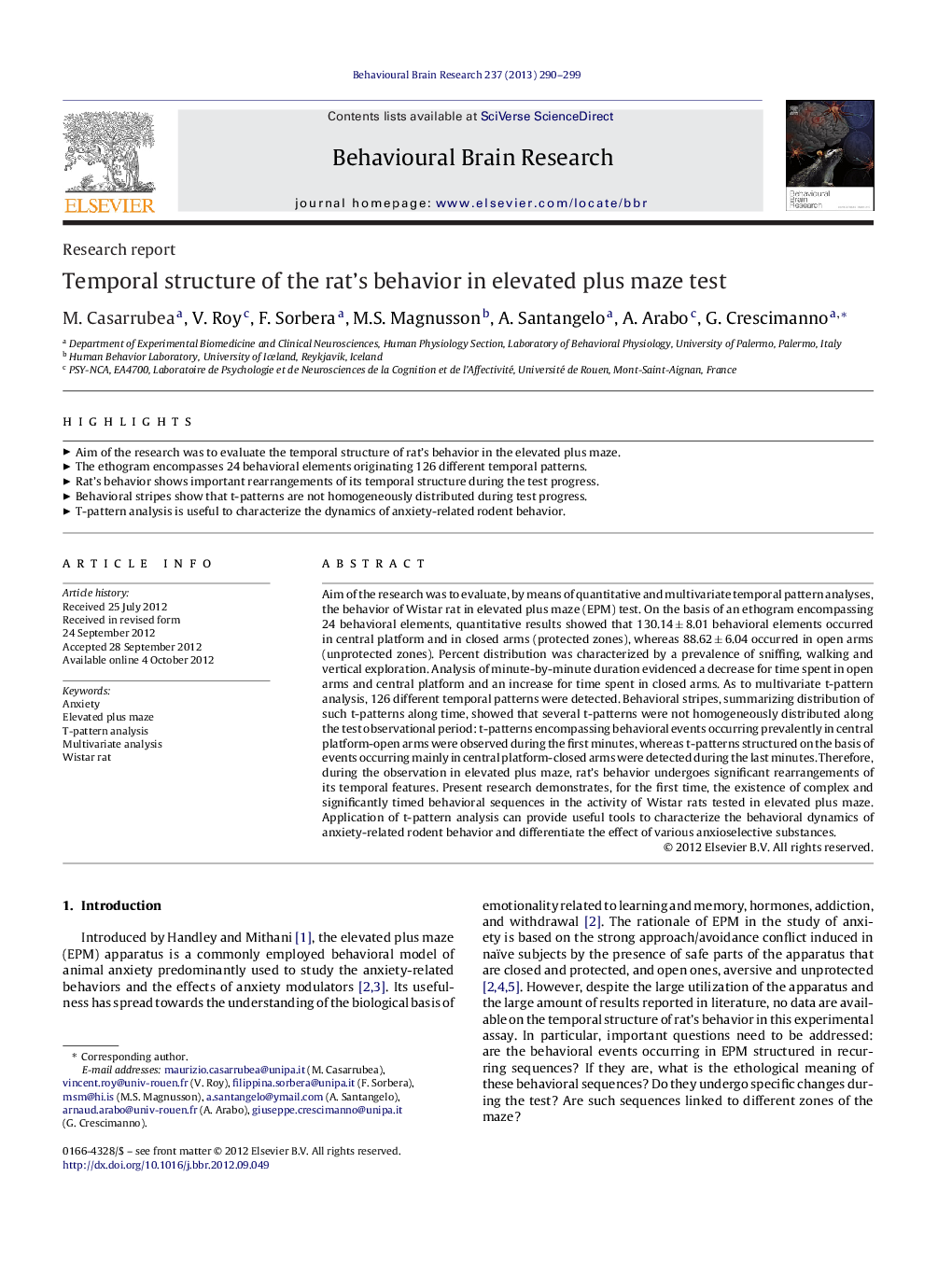| Article ID | Journal | Published Year | Pages | File Type |
|---|---|---|---|---|
| 6259370 | Behavioural Brain Research | 2013 | 10 Pages |
Aim of the research was to evaluate, by means of quantitative and multivariate temporal pattern analyses, the behavior of Wistar rat in elevated plus maze (EPM) test. On the basis of an ethogram encompassing 24 behavioral elements, quantitative results showed that 130.14 ± 8.01 behavioral elements occurred in central platform and in closed arms (protected zones), whereas 88.62 ± 6.04 occurred in open arms (unprotected zones). Percent distribution was characterized by a prevalence of sniffing, walking and vertical exploration. Analysis of minute-by-minute duration evidenced a decrease for time spent in open arms and central platform and an increase for time spent in closed arms. As to multivariate t-pattern analysis, 126 different temporal patterns were detected. Behavioral stripes, summarizing distribution of such t-patterns along time, showed that several t-patterns were not homogeneously distributed along the test observational period: t-patterns encompassing behavioral events occurring prevalently in central platform-open arms were observed during the first minutes, whereas t-patterns structured on the basis of events occurring mainly in central platform-closed arms were detected during the last minutes. Therefore, during the observation in elevated plus maze, rat's behavior undergoes significant rearrangements of its temporal features. Present research demonstrates, for the first time, the existence of complex and significantly timed behavioral sequences in the activity of Wistar rats tested in elevated plus maze. Application of t-pattern analysis can provide useful tools to characterize the behavioral dynamics of anxiety-related rodent behavior and differentiate the effect of various anxioselective substances.
⺠Aim of the research was to evaluate the temporal structure of rat's behavior in the elevated plus maze. ⺠The ethogram encompasses 24 behavioral elements originating 126 different temporal patterns. ⺠Rat's behavior shows important rearrangements of its temporal structure during the test progress. ⺠Behavioral stripes show that t-patterns are not homogeneously distributed during test progress. ⺠T-pattern analysis is useful to characterize the dynamics of anxiety-related rodent behavior.
